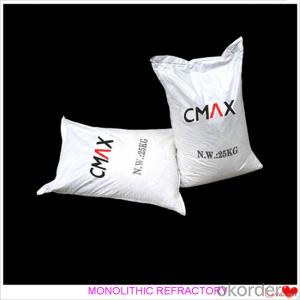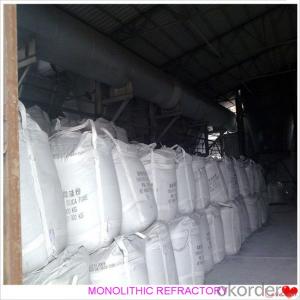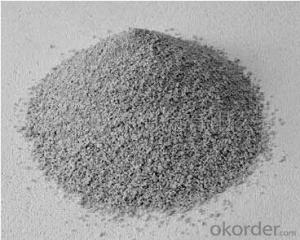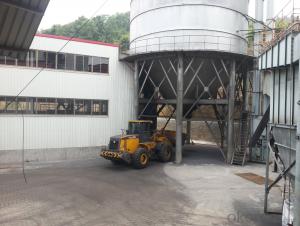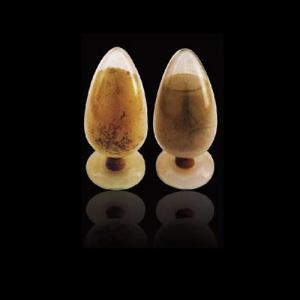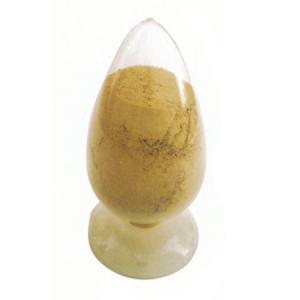Fireclay Castable For Fireplace and Industrial Furnace in Iron and Steel
- Loading Port:
- China main port
- Payment Terms:
- TT OR LC
- Min Order Qty:
- 1000 kg
- Supply Capability:
- 3000000 kg/month
OKorder Service Pledge
OKorder Financial Service
You Might Also Like
Fireclay Castable For Fireplace and Industrial Furnace in Iron and Steel
Product Description:
Fireclay Castable is manufactured according to international standards. The product is famous for its excellent abrasion resistance and low thermal conductivity. Further, these can be provided in different specifications as required by the clients. The Fireclay Castables are used high purity raw materials and additives as the main material, and made of under superfine powder adding technology.
Product Advantages:
The material has excellent structural stability and air tightness, and has high physical and chemical properties, also has a fine working ability.They should be used with the same material products.
Product Applications:
For feature of Fireclay Castable, they have excellent abrasion resistance, thermal shock resistance, high-temperature resistance, anti-corrode and have high intensity.
Designed for refractory lining of blast furnace iron and slag runners, skimmers and soon
They can be used in troughs of small and mid size BFs and in all positions of the troughs where fast tapping is required.
Product Specifications:
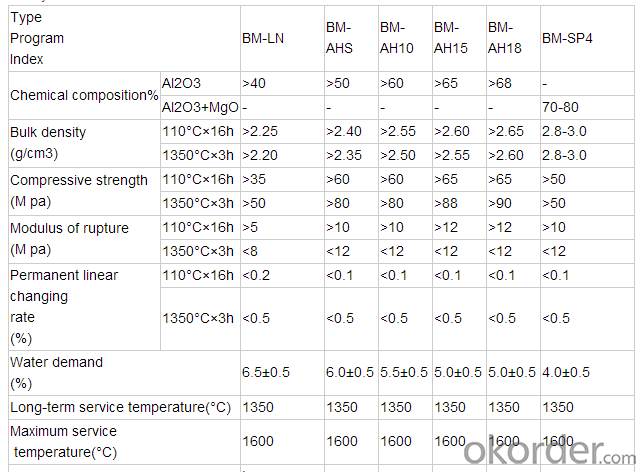
FAQ:
1. How you can control your quality?
For each production processing, we have complete QC system for the chemical composition
and Physical properties. After production, all the goods will be tested, and the quality certificate
will be shipped along with goods.
2. What's your delivery time?
It usually needs about 20days- 45 days after receiving the deposit.
3. Do you provide free samples?
Yes, we can provide a free sample for testing, If we have sample in stock,
The quantity based on the material type, The buyer should bear all the shipping costs.
4. What's your payment terms?
We can accept 30% deposit, 70% balance before shipment for ordrs over $ 2000.
5. Can we visit your Company?
Yes, certainly. You are very welcome to China and we will be honored to have a customer and friend.
Product Picture:
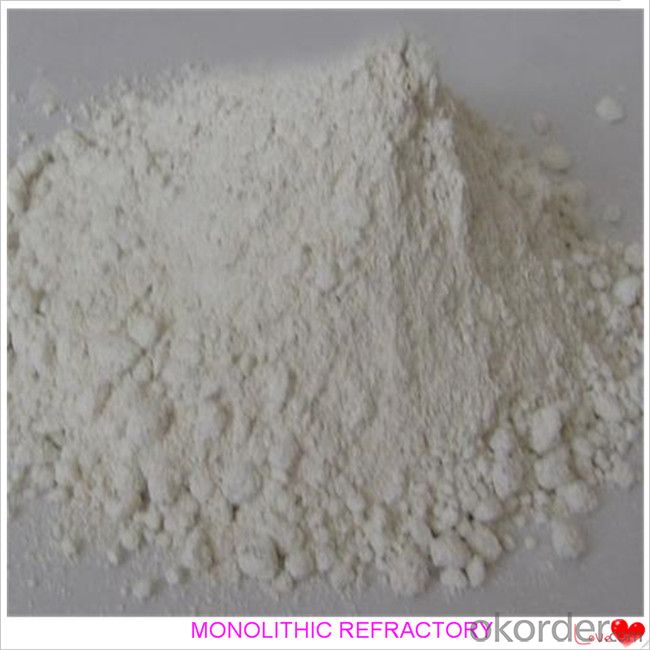
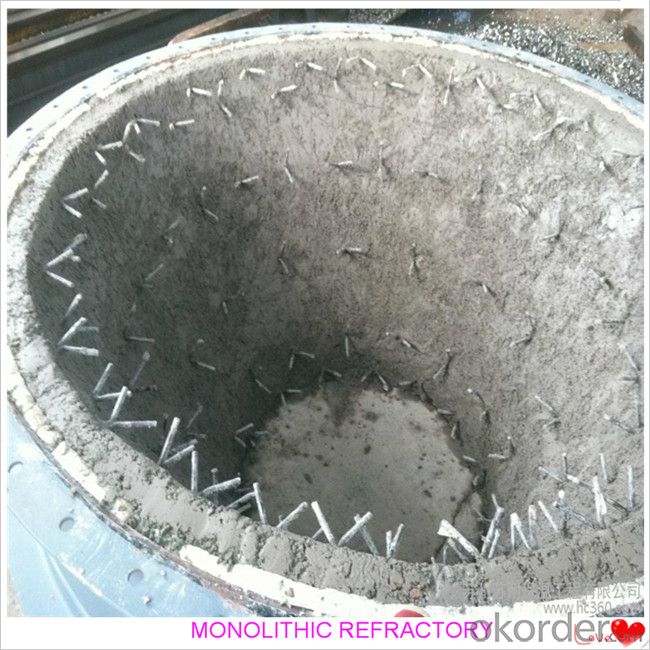
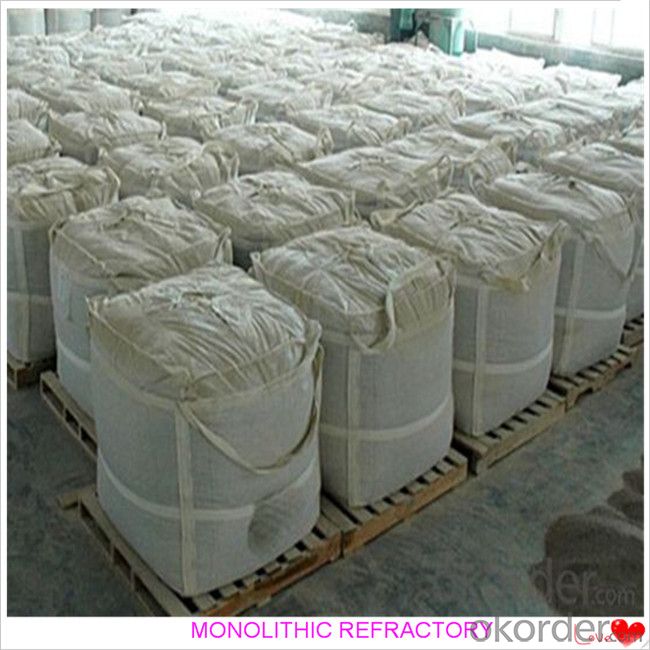
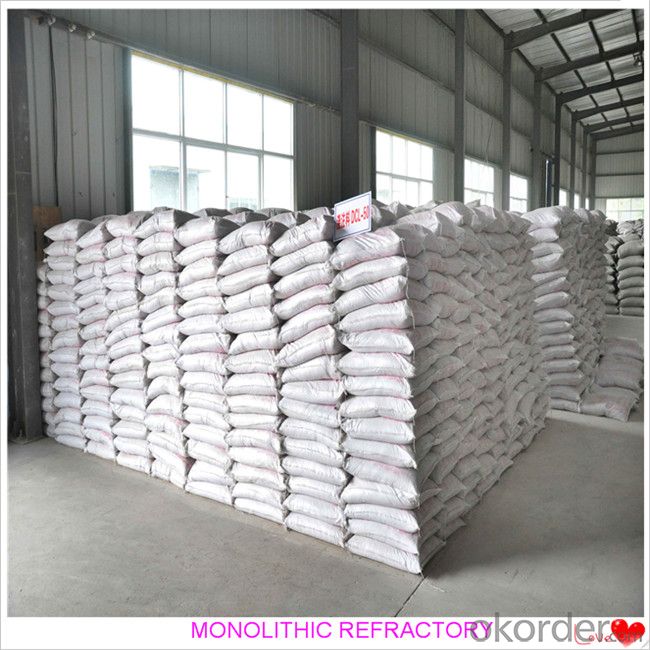
- Q:What types of monolithic refractories are commonly used in the iron and steel industry?
- In the iron and steel industry, several types of monolithic refractories are commonly used due to their high resistance to extreme temperatures and mechanical stresses. These refractories are essential for lining furnaces, ladles, and other equipment used in the production of iron and steel. One commonly used monolithic refractory in this industry is castable refractory. It is a mixture of refractory aggregates, binders, and additives that can be poured or cast into various shapes and sizes. Castable refractories are versatile and can be easily installed, making them suitable for lining large furnaces and ladles. They offer good thermal insulation and excellent resistance to thermal shocks. Another type of monolithic refractory used in the iron and steel industry is plastic refractory. It consists of a high-alumina refractory aggregate mixed with a bonding agent, usually clay. Plastic refractories have a high plasticity and can be easily shaped by hand or with a trowel. They are commonly used for repairs and patching in furnaces and ladles. Ramming refractories are also commonly employed in the iron and steel industry. These refractories are made of granular refractory materials mixed with a binder. They are installed by ramming the mixture into the desired shape using a pneumatic hammer or manual ramming tools. Ramming refractories offer high resistance to abrasion and erosion, making them suitable for lining the bottoms of furnaces and other areas subjected to intense mechanical wear. Lastly, gunning refractories are frequently used in the iron and steel industry. Gunning refractories are made of fine refractory powders mixed with water or a bonding agent. They are applied using a gunning machine, which propels the refractory material onto the surface to be lined. Gunning refractories are commonly used for repairing and maintaining the linings of ladles, tundishes, and other equipment. Overall, the iron and steel industry relies on a variety of monolithic refractories such as castables, plastics, rammings, and gunnings to ensure the reliable and efficient operation of their equipment in high-temperature environments. These refractories provide excellent thermal insulation, resistance to thermal shocks, and mechanical strength essential for the production of iron and steel.
- Q:How do monolithic refractories improve the thermal efficiency of iron and steel furnaces?
- Monolithic refractories improve the thermal efficiency of iron and steel furnaces by providing superior insulation and heat containment properties. These refractories are designed to withstand extreme temperatures and resist thermal shock, ensuring minimal heat loss from the furnace. Additionally, monolithic refractories have low thermal conductivity, allowing for better heat distribution and retention within the furnace. This enhanced thermal efficiency leads to reduced energy consumption and higher productivity in the iron and steel manufacturing process.
- Q:What are the factors to consider when selecting monolithic refractories for specific applications?
- When selecting monolithic refractories for specific applications, several factors need to be considered. These include the operating temperature, chemical composition of the material being processed, mechanical stresses, thermal cycling, and the presence of any corrosive or erosive agents. Additionally, the refractory's thermal conductivity, porosity, density, and its ability to resist thermal shock and spalling are crucial factors to take into account. The availability and cost of the refractory material, as well as the installation and maintenance requirements, should also be considered during the selection process.
- Q:Can monolithic refractories be used for the lining of ladle refining furnaces and VOD converters?
- Indeed, ladle refining furnaces and VOD converters can benefit from the utilization of monolithic refractories. These refractories, which consist of a single, uniform material, can be molded and installed in various settings, particularly those involving extreme temperatures such as ladle refining furnaces and VOD converters. The advantage of monolithic refractories lies in their simplicity of application and repair. They can be either cast or gunned in place, offering flexibility in terms of lining design and installation. The lining of ladle refining furnaces and VOD converters requires materials capable of withstanding high temperatures, chemical reactions, and mechanical stresses. Monolithic refractories are well-suited for these demanding applications due to their exceptional resistance to thermal shock and chemical attack. In the case of ladle refining furnaces, monolithic refractories are used to line the vessel in which molten metal is contained and processed. By doing so, these refractories help to maintain the desired temperature and safeguard the ladle from the corrosive effects of both molten metal and slag. Additionally, they serve as insulation to minimize heat loss and enhance energy efficiency. VOD converters, on the other hand, are employed in the steelmaking process to reduce the carbon content of molten steel. Monolithic refractories play a crucial role in lining the converter's vessel and ensuring the maintenance of the required temperature for the decarburization reaction. Furthermore, they provide protection against the corrosive impact of molten metal and slag, thereby guaranteeing the converter's durability and performance. To summarize, monolithic refractories possess outstanding characteristics that make them an excellent choice for lining ladle refining furnaces and VOD converters. Their versatility, ease of installation, and ability to withstand high temperatures and chemical attack render them perfectly suited for these critical applications within the steel industry.
- Q:How do monolithic refractories improve the durability of furnace linings?
- The durability of furnace linings is significantly enhanced by the unique characteristics and properties of monolithic refractories. Unlike traditional brick refractories, which are made up of individual bricks or tiles, monolithic refractories consist of a single, homogeneous structure. A key advantage of monolithic refractories is their ability to eliminate joints and seams, which are weak points in traditional brick refractories. These joints can lead to cracks and failures due to thermal expansion and contraction. In contrast, monolithic refractories are poured or gunned into place, creating a seamless lining that minimizes the potential for cracks. This seamless structure increases the durability of the lining and reduces its susceptibility to thermal stress. In addition, monolithic refractories exhibit excellent thermal shock resistance, which is crucial for furnace linings that experience rapid and extreme temperature changes. The monolithic structure allows for better heat transfer and distribution, preventing localized hotspots that can cause thermal shock and lining failure. This enhanced thermal shock resistance enables the furnace lining to withstand repeated heating and cooling cycles without significant damage, thus improving its overall durability. Furthermore, monolithic refractories offer superior resistance to erosion and corrosion. Furnace linings are often exposed to harsh chemicals, molten metals, and abrasive materials, which can cause erosion and corrosion over time. Monolithic refractories are specifically designed to resist these corrosive agents, protecting the lining from chemical attacks and physical wear. This resistance ensures a longer lifespan for the furnace lining and reduces the need for frequent repairs or replacements. Moreover, monolithic refractories possess better insulation properties compared to traditional brick refractories. They have lower thermal conductivity, meaning that heat transfer through the lining is minimized. This insulation property helps to maintain a more stable and uniform temperature within the furnace, reducing thermal stress on the lining and contributing to its longevity. To summarize, monolithic refractories enhance the durability of furnace linings by eliminating joints and seams, improving thermal shock resistance, providing erosion and corrosion resistance, and offering superior insulation properties. These materials are specifically engineered to withstand the extreme conditions inside furnaces, ensuring a longer lifespan for the lining and reducing maintenance costs in the long term.
- Q:What are the specific requirements of monolithic refractories for steel ladle purging applications?
- Monolithic refractories used for steel ladle purging applications need to possess specific characteristics. These include high resistance to thermal shock and spalling, excellent erosion and corrosion resistance, low porosity, and high strength at high temperatures. Additionally, they should have good thermal conductivity and be capable of withstanding aggressive steel compositions and temperatures. Overall, the specific requirements for monolithic refractories in steel ladle purging applications are aimed at ensuring durability, longevity, and optimal performance in the harsh conditions of the steelmaking process.
- Q:What are the challenges in recycling monolithic refractories?
- One of the main challenges in recycling monolithic refractories is their composition. Monolithic refractories are typically made from a combination of different minerals, binders, and additives, which can make the separation and recovery of individual components difficult. Additionally, the high temperatures at which monolithic refractories are used can cause chemical reactions and physical changes that affect their recyclability. Furthermore, the presence of contaminants, such as metal oxides or impurities from the manufacturing process, can also pose challenges in the recycling process. Overall, developing efficient and cost-effective recycling methods for monolithic refractories requires addressing these challenges and finding innovative solutions.
- Q:How are monolithic refractories installed and repaired in iron and steel production facilities?
- Monolithic refractories play a crucial role in iron and steel production facilities by offering insulation and protection against high temperatures, chemical corrosion, and mechanical wear. To install and repair these refractories, careful planning, expertise, and adherence to safety protocols are necessary. To begin installation, the surface must be prepared by eliminating loose material and cleaning the area thoroughly. This step guarantees proper adhesion of the refractory material and may also involve roughening or texturing the surface for better bonding. Next, a workable consistency is achieved by mixing the monolithic refractory material with water or a binder. The material is then applied to the prepared surface using techniques like casting, gunning, ramming, or troweling. The choice of application method depends on factors such as the type of refractory material, repair area, and desired outcome. During installation, it is vital to carefully follow the manufacturer's instructions regarding mixing ratios, curing times, and drying temperatures. Improper installation can result in reduced refractory performance, premature failure, and safety hazards. Repairing monolithic refractories in iron and steel production facilities is an ongoing process due to the harsh operating conditions and mechanical stresses they endure. It is crucial to promptly address any signs of damage or wear to prevent further deterioration. The first step in the repair process is to assess the extent of the damage. This can be achieved through visual inspection, thermal imaging, or non-destructive testing techniques. Once the damage is identified, the appropriate repair method can be determined. Minor repairs can often be accomplished using patching materials that have a composition similar to the original refractory. These materials are mixed with water or a binder to form a paste, which is then applied to the damaged area and allowed to cure. For more extensive repairs, the damaged refractory material may need to be completely removed using mechanical methods like chipping, grinding, or cutting. After removing the damaged material, the surface is prepared as mentioned earlier, and new refractory material is installed using the appropriate application method. It is important to note that the repair process should be carried out by trained personnel with expertise in refractory installation and repair. Safety precautions, such as wearing protective clothing, using proper tools, and following established procedures, should always be observed. In conclusion, the installation and repair of monolithic refractories in iron and steel production facilities necessitate careful planning, adherence to manufacturer's instructions, and expertise in refractory materials. By following proper procedures and promptly addressing any damage, these facilities can ensure the longevity and efficiency of their refractory linings, ultimately contributing to the smooth operation of their production processes.
- Q:How do monolithic refractories perform in torpedo ladle applications?
- Due to their excellent performance and durability, monolithic refractories are commonly used in torpedo ladle applications. Torpedo ladles are utilized in the steelmaking process to transport and pour molten metal from the blast furnace to the steelmaking furnace. Also known as unshaped refractories, monolithic refractories are made from a single material and can be applied as a cohesive mass, making them highly versatile and easy to install in the torpedo ladle. In torpedo ladle applications, monolithic refractories offer numerous advantages. Firstly, they possess high heat resistance, enabling them to endure the extreme temperatures and thermal shocks experienced during the transfer and pouring of molten metal. This ensures that the refractories do not crack or fail under these harsh conditions. Additionally, monolithic refractories exhibit excellent corrosion resistance properties, which is imperative in torpedo ladles where the molten metal can be highly corrosive. They can withstand the aggressive chemical environment and prevent chemical reactions that could result in refractory deterioration. Moreover, monolithic refractories possess good thermal insulation properties, reducing heat loss from the molten metal and promoting energy efficiency. This helps to maintain the desired temperature of the metal, ensuring optimal steelmaking conditions. Furthermore, monolithic refractories offer strong mechanical strength and resistance to abrasion, making them highly suitable for torpedo ladle applications where the refractory lining is subjected to mechanical stress and wear. Overall, monolithic refractories perform exceptionally well in torpedo ladle applications due to their high heat resistance, corrosion resistance, thermal insulation properties, and mechanical strength. They can endure the extreme conditions and provide a reliable and long-lasting lining for torpedo ladles in the steelmaking industry.
- Q:How do monolithic refractories withstand thermal shock?
- Monolithic refractories withstand thermal shock due to their unique composition and structure. They are made from a single, continuous material with no joints or seams, which allows them to expand and contract uniformly under extreme temperature changes. Additionally, monolithic refractories possess excellent thermal conductivity, which enables them to quickly dissipate heat and minimize stress build-up. These properties make them highly resistant to thermal shock and capable of withstanding rapid temperature fluctuations without cracking or breaking.
1. Manufacturer Overview |
|
|---|---|
| Location | |
| Year Established | |
| Annual Output Value | |
| Main Markets | |
| Company Certifications | |
2. Manufacturer Certificates |
|
|---|---|
| a) Certification Name | |
| Range | |
| Reference | |
| Validity Period | |
3. Manufacturer Capability |
|
|---|---|
| a)Trade Capacity | |
| Nearest Port | |
| Export Percentage | |
| No.of Employees in Trade Department | |
| Language Spoken: | |
| b)Factory Information | |
| Factory Size: | |
| No. of Production Lines | |
| Contract Manufacturing | |
| Product Price Range | |
Send your message to us
Fireclay Castable For Fireplace and Industrial Furnace in Iron and Steel
- Loading Port:
- China main port
- Payment Terms:
- TT OR LC
- Min Order Qty:
- 1000 kg
- Supply Capability:
- 3000000 kg/month
OKorder Service Pledge
OKorder Financial Service
Similar products
New products
Hot products
Related keywords

